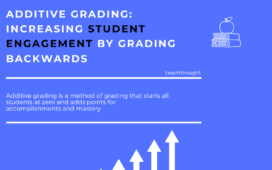
Integrating AI In Curriculum Design
As technological advancements continue to reshape various industries, the field of education is experiencing significant transformations, particularly with the integration of Artificial Intelligence (AI). One of the most promising applications of AI lies in curriculum design, where it can create more personalized, efficient, and compelling learning experiences. This article explores how educators can successfully integrate AI into curriculum design, highlighting the myriad benefits, addressing the challenges, and offering best practices for implementation.
The Potential Of AI In Curriculum Design
AI’s potential to transform curriculum design is profound, providing data-driven insights and automating various aspects of the educational process. Here are some key ways AI can enhance curriculum design:
Personalized Learning Paths
AI algorithms excel at analyzing large datasets to understand students’ learning styles, preferences, and progress. By leveraging this data, AI can create tailored learning experiences that cater to each student’s unique needs. This personalization ensures learners receive appropriately challenging content, keeping them engaged and fostering a deeper understanding of the material.
For instance, AI can identify students’ strengths and weaknesses, allowing educators to adjust the curriculum to provide additional support or introduce more advanced materials for gifted students. This adaptability ensures that every student is included and that each one can progress at their own pace.
Efficient Content Creation
AI tools can significantly streamline the process of creating educational content. These tools can generate quizzes, assignments, and lesson plans based on predefined parameters. This automation saves educators considerable time and effort, allowing them to focus more on teaching and engaging with students. Moreover, AI can help ensure the content is up-to-date and aligned with current educational standards.
For example, AI-powered platforms can scan educational databases to extract the most relevant and recent information, automatically integrating it into the curriculum. This continuous updating process ensures that students always have access to the latest knowledge and resources.
Continuous Improvement
AI systems continuously collect and analyze data on student performance and engagement. This allows educators to identify areas where students struggle and adjust the curriculum accordingly. AI can also provide feedback on the effectiveness of teaching methods and materials, enabling continuous improvement in curriculum design.
By using AI to monitor and evaluate student interactions with the curriculum, educators can gain insights into which instructional strategies are most effective. This data-driven approach helps refine and enhance the curriculum, leading to better educational outcomes.
Implementing AI In Curriculum Design: Best Practices
Integrating AI into curriculum design requires careful planning and consideration. Here are some best practices to ensure successful implementation:
Start With Clear Objectives
Before integrating AI into curriculum design, it’s essential to have clear objectives. Define what you hope to achieve with AI, whether it’s improving student engagement, personalizing learning experiences, or enhancing content creation. Having clear goals will guide your implementation strategy and help you measure success.
For example, an objective might be to reduce the dropout rate by identifying at-risk students early and providing them with personalized support. Clear objectives ensure that AI integration is purpose-driven and aligned with the educational institution’s goals.
Choose The Right Tools
Numerous AI tools are available for education, each with its own strengths and capabilities. It’s crucial to choose tools that align with your objectives and meet the specific needs of your students and curriculum. Consider factors such as ease of use, integration with existing systems, and the vendor’s level of support.
Conducting a thorough needs assessment can help you select the right tools. This involves understanding the specific requirements of your educational context and evaluating various AI solutions based on their features, cost, and scalability.
Involve Educators In The Process
Educators play a critical role in successfully integrating AI into curriculum design. Involve teachers and Instructional Designers in the selection and implementation of AI tools. Provide training and support to help them understand how to use the tools effectively and incorporate them into their teaching practices.
Creating a collaborative environment where educators can share their experiences and insights can foster a positive attitude toward AI integration. Professional development programs focused on AI literacy and practical applications in education can further empower teachers.
Ensure Data Privacy And Security
AI systems rely on collecting and analyzing student data, which raises essential privacy and security concerns. Ensure that any AI tools you use comply with data protection regulations and have robust security measures. Educate students and parents about how their data will be used and obtain necessary consent.
Implementing robust data governance policies is crucial to protect student information. This includes encryption, regular security audits, and transparent data usage policies to build trust among all stakeholders.
Monitor And Evaluate
Once AI tools are integrated into the curriculum design process, monitoring and evaluating their effectiveness is essential. Collect feedback from educators and students, analyze performance data, and adjust as needed. Regular evaluation will help you identify any issues and ensure the AI tools deliver the desired outcomes.
Establishing Key Performance Indicators (KPIs) and benchmarks can aid the evaluation process. Regular reviews and adjustments based on these metrics ensure that AI integration aligns with educational goals.
Challenges And Considerations
While AI offers many benefits for curriculum design, there are also challenges and considerations to keep in mind:
Ethical Concerns
AI in education raises several ethical concerns, including bias, fairness, and transparency. AI algorithms can unintentionally perpetuate biases in the training data, leading to unfair outcomes for specific student groups. Addressing these ethical concerns by using diverse and representative datasets, regularly auditing AI systems for bias, and being transparent about how AI is used in the educational process is essential.
Developers and educators must collaborate to ensure that AI systems are designed and deployed ethically. This involves monitoring biases, implementing fairness-aware algorithms, and maintaining transparency in AI operations.
Teacher Resistance
Some educators may resist integrating AI, fearing it could replace their roles or undermine their professional autonomy. Address these concerns by emphasizing that AI is a tool to enhance, not replace, the role of teachers. Provide professional development and support to help educators feel confident and comfortable using AI in their teaching.
Creating a culture of openness and continuous learning can help mitigate resistance. Highlighting success stories and practical benefits of AI integration can also foster a positive attitude towards the technology.
Technical Challenges
Implementing AI in curriculum design requires technical expertise and infrastructure. Schools and educational institutions may face challenges integrating AI tools with existing systems, ensuring reliable internet connectivity, and providing technical support. A straightforward implementation plan and allocating resources to address these technical challenges is essential.
Collaboration with IT professionals and AI experts can facilitate a smoother integration process. Regular maintenance and updates of AI systems ensure their optimal performance and relevance.
Future Implications Of AI In Curriculum Design
The future of AI in curriculum design is promising, with several exciting developments on the horizon. Advances in Natural Language Processing (NLP) and Machine Learning will further enhance AI’s ability to understand and respond to student needs. NLP, for instance, can enable AI systems to provide more nuanced and context-aware feedback, improving the overall learning experience.
Moreover, integrating AI with other emerging technologies, such as Virtual Reality (VR) and Augmented Reality (AR), can create immersive and interactive learning environments. These technologies can simulate real-world scenarios, allowing students to apply theoretical knowledge in practical contexts. For example, medical students can use VR to practice surgical procedures in a risk-free environment, while language learners can engage in virtual conversations with AI-powered avatars.
Another exciting development is the potential for AI to facilitate lifelong learning. As the job market evolves, continuous upskilling and reskilling become essential. AI-driven personalized learning platforms can support lifelong learning by providing customized learning paths based on an individual’s career goals and skill gaps. This adaptability ensures that learners can stay relevant in a rapidly changing world.
AI can also play a crucial role in fostering global educational collaboration. AI-powered platforms can connect students and educators worldwide, promoting cross-cultural exchange and collaborative learning. This global perspective enriches the learning experience and prepares students for a connected world.
Conclusion
Integrating AI into curriculum design can create more personalized, efficient, and compelling learning experiences. By leveraging AI’s capabilities to analyze data, generate content, and provide continuous feedback, educators can enhance the quality of education and better meet the needs of their students. However, successful integration requires careful planning, consideration of ethical and technical challenges, and ongoing evaluation.
As we progress, we must balance leveraging AI’s capabilities and ensuring ethical and equitable practices. By doing so, we can harness the power of AI to create a more inclusive, engaging, and effective educational landscape, ultimately benefiting learners and educators alike. The future of education lies in our ability to embrace innovation while maintaining a commitment to fairness and accessibility for all.















